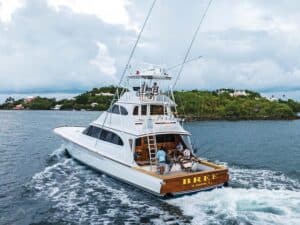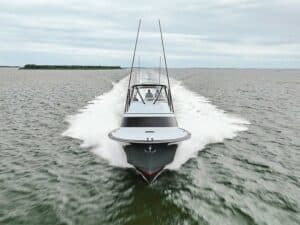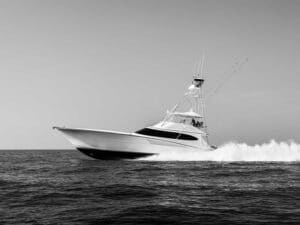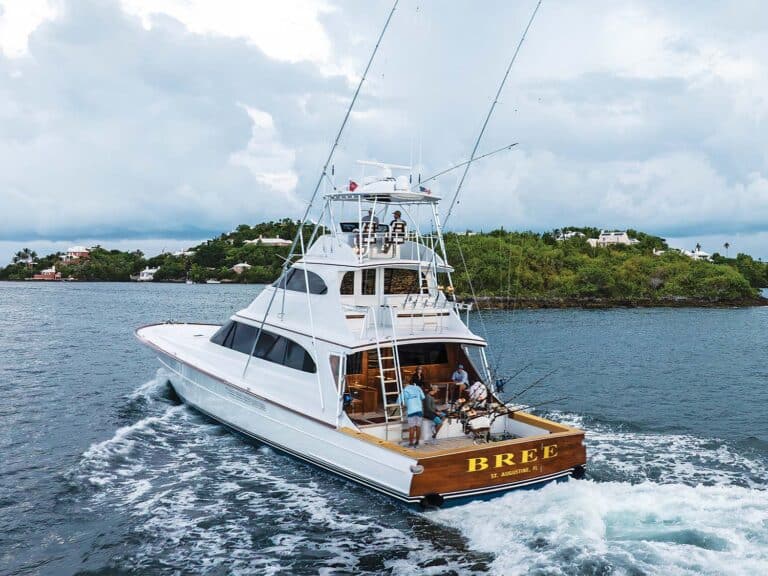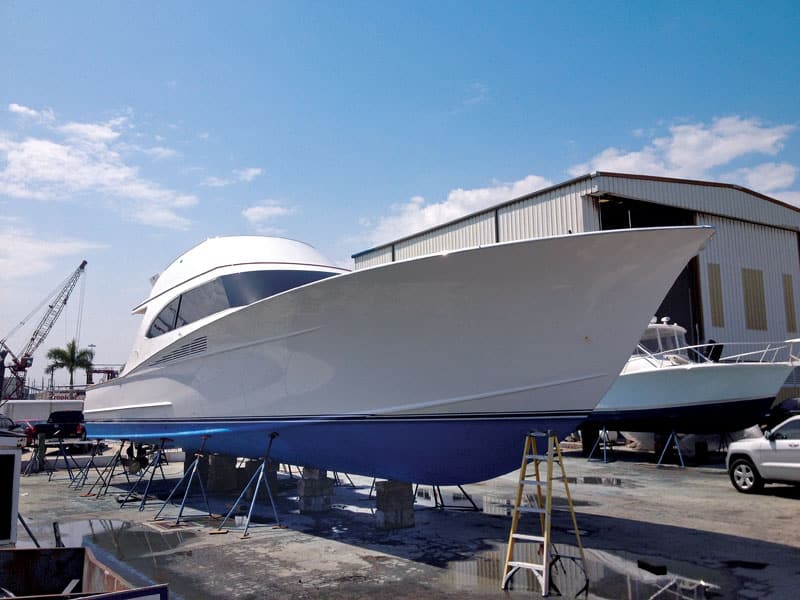
It’s hard to believe Stalker is now 10 years old. It seems like only yesterday we were wrapping things up at Spencer Yachts, eager and excited to head south and start fishing. Since then, we have racked up almost 6,000 billfish, put more than 12,000 engine hours on two sets of Caterpillar C-18 engines and swapped out two generators, all while easily logging more than 100,000 sea miles. We fished eight seasons in St. Thomas, U.S. Virgin Islands; nine different seasons in Venezuela; traveled three times to Costa Rica and Panama; twice to Cabo San Lucas, Mexico, and back; and we went to the Galapagos Islands on the way to Salinas, Ecuador. We also hit almost every island in the Caribbean once, if not twice.
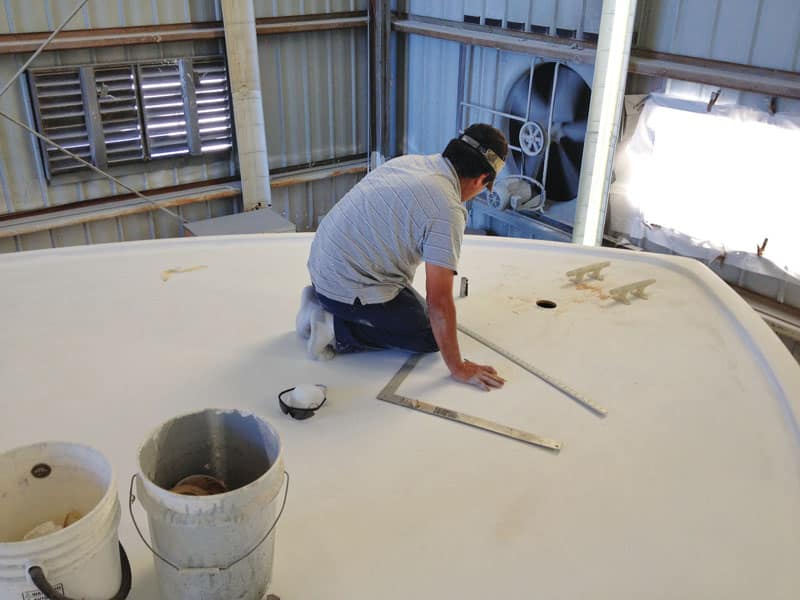
What’s the Plan?
My two bosses started to ask if the boat could keep up this pace or if it made sense to get something else. My answer was: What are you going to be doing for the next 10 years? If you want to do the same things we did the last 10, it would be great to have a few things added to make life more comfortable, since none of us are getting any younger and we sure learned a lot along the way. It would be great to have an extra head, more fuel capacity, a second generator and a mezzanine setup with extra freezer space and an anchor locker. Yes, Stalker never had an anchor locker; we stowed all the ground tackle in the engine room.
As a boat captain, I knew I could add just about everything I wanted to the boat by simply pulling into any boatyard and having them start banging away, but my yacht broker experience told me to do the math. Would a refit be worth it in the end? Once you add up the current value of a 10-year-old 57 Spencer Yacht with all the upgrades we wanted, we would never come close to selling this boat for what we would have in it. As I have told many clients before, things you add to your boat do not constitute a capital investment. An upgrade only enhances resale ability by making the boat more appealing to buyers.
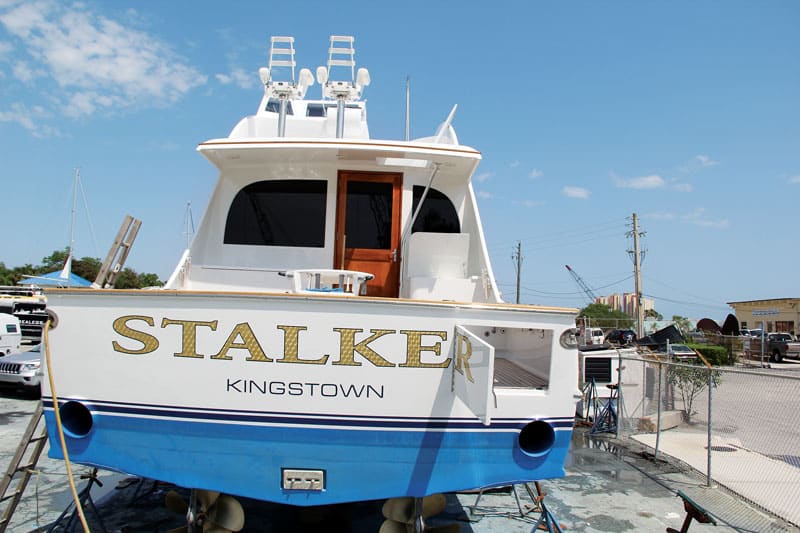
Refit or Buy?
Since investing a ton of money into Stalker made little financial sense, our next option was to look for a pre-owned boat that would fit our needs. Unfortunately, after we made our list of requirements, what we desired was not available. We then determined that the new Stalker was going to have to be custom built. A new build was going to take two years or more, so we decided to do some work to the old Stalker to keep her fishing and to enhance the resale value once it was time to let her go.
It was time to take Stalker back to Florida to get some much-needed exterior work. The plan was to be in Florida for six months then get back to Punta Cana in the Dominican Republic for the start of the season. Our last trip back, we re-powered with new engines, plus we rebuilt the transmissions and generator. We also added new exhaust risers and new Sub-Zero under-counter refrigerator/freezers, put in a new ice maker and painted the engine room. This time, we were going to focus mostly on the exterior of the boat. We needed new paint; the half tower was cracked in a few places, and even though we were on our second set of electronics, it was time to replace them as well — you can only push those buttons so many times before they wear out. We also needed some fresh teak covering boards and a new fighting chair.
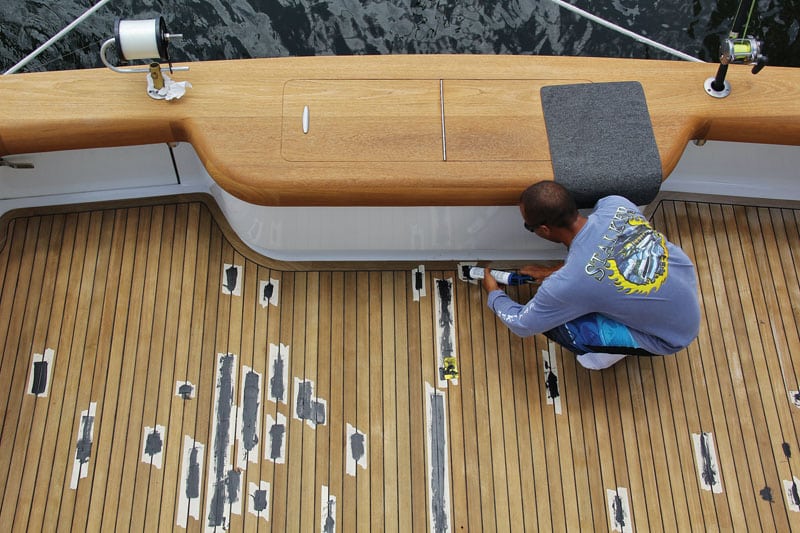
Find the Right Yard
Once in Florida, I pulled into my favorite boat yard, Cable Marine West in Fort Lauderdale. I don’t know a single crew member who likes yard work, but unfortunately, it’s all part of the game. The more work you get done in the yard, the less chance you have of breaking down at sea. Since I am into the using-and- abusing side of boating and not the fixing side, I go through a comprehensive inspection with a couple of the yard’s technicians. They have been dealing with me for more than 15 years and understand the demands we put on our boat, as well as our busy schedule.
We run our boat 1,000 to 1,200 hours a year, and we expect our annual maintenance to take us through until the next year; once a year in a boatyard is enough if done properly. For us and the yard, it’s about safety first — you don’t want to be running from a hurricane wondering if you should have changed out the ball joints on the steering arms or if you should have changed out those cutlass bearings. So the technician and I go through and make a list of all items we feel need to be repaired or replaced. Once that is done, I sit down with the service manager to figure out the cost and the schedule.
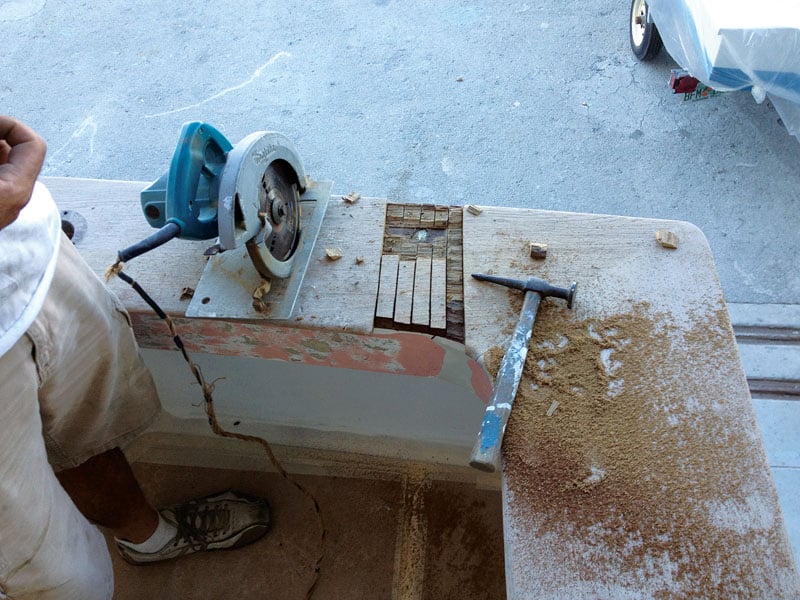
Words of Wisdom
George Cable, owner of Cable Marine, once told me something that always holds true: There are three things you will never get together — a cheap price, fast work and a good job; you will only get two of them. So don’t get in a hurry; always give the yard time to get the job done right.
Since we had not been back to the States for three years, we wrote up a long list of items for the yard to tackle, such as rebuilding the steering system including new hydraulic lines; running gear maintenance; replacing all bearings and seals; rebuilding the heads and changing all plumbing lines; and replacing all worn-out hoses, through hulls and clamps. Add the annual bottom job to the list, and $50,000 goes away in a blink of an eye.
Unfortunately, because of my tight schedule and Cable Marine already having its paint booths booked up well in advance, all we could get done was the machinery. So now I was left with four months to get a paint job, covering boards, anchor locker, new half tower and new electronics. Also, if I had time, I wanted to rearrange some of the machinery in the engine room. We wanted a bigger water heater, and to do that, we needed to move the ice maker, water maker and the power transformer.
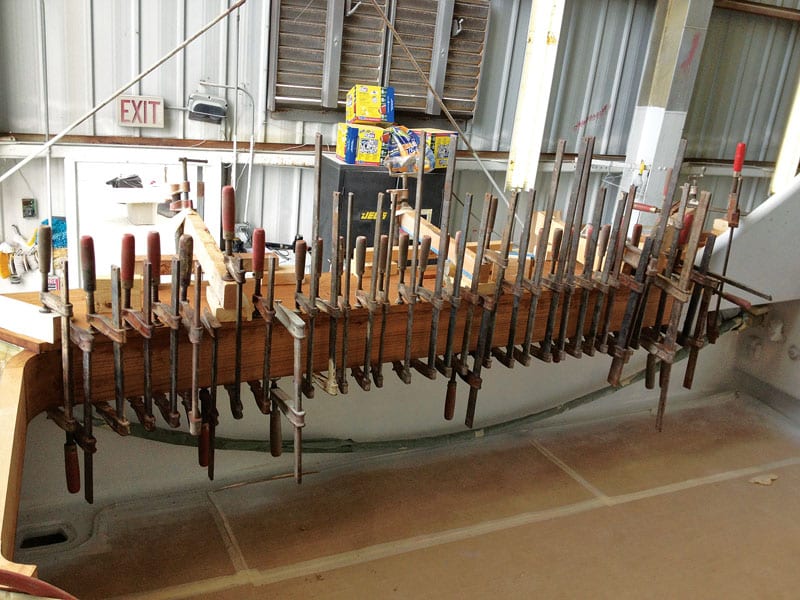
All this was easier said than done. Four months seems like enough time to pull off a paint job, but just getting the busy painters to inspect the boat and give me a price was running out my clock fast. Every boat’s different, and a professional painter can’t give you a price without seeing the boat. There are a number of factors that change the cost. One of the problems we faced was typical of Carolina custom boats made from wood and epoxy: the effect of the curing shrinkage in the epoxy over time. It’s one of the only downsides of epoxy.
Fiberglass laminates can be thin in wood boat construction, and shrinkage can be from 2-4 percent. Shrinkage signs include the print-though — or the visible fiberglass cloth print pattern — hard lines exposing seams, joints under the glass and stress cracks. Throw in worn paint and scratches, and a little job can turn into a big job. The prep work is 75 percent of the labor, so the more prep work, the more the cost will be, including time spent in the shed.
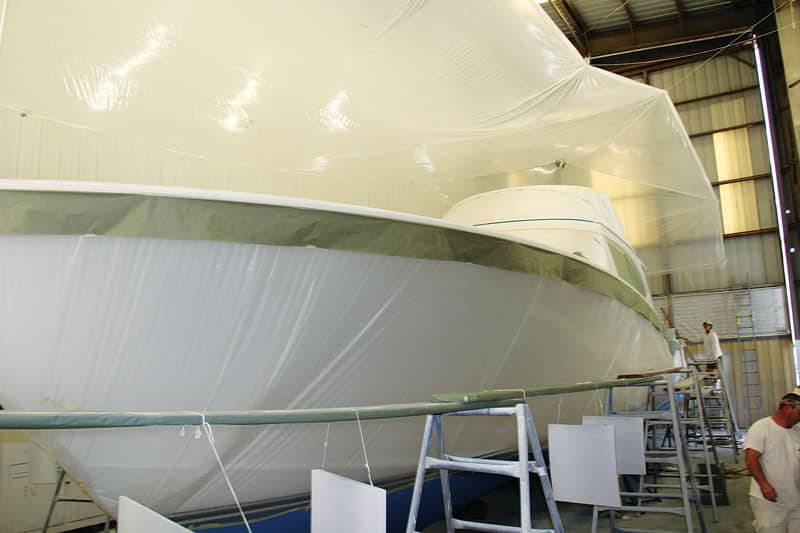
Finding the Right Contractor
Since we don’t go through full paint jobs very often, I was running out of painters I knew who could give a me good paint job. Earlier that summer in St. Thomas, I was docked behind Capt. James Barnes on the 61 Garlington Reel Lax. His boat had just come out of the paint shed in Palm Beach, Florida, and it looked awesome, so I tracked Barnes down to find out who he had used. He had gone with Eagle Eye Enterprises – Marine Services and was more than happy with the work, plus they kept to his schedule.
It was late on a Friday when I made the call to Carlos at Eagle Eye. I told him what I was looking for and how much time I had, and he agreed to come out the next day to look it over and give me an estimate on site. If we agreed, he could start the job in a few days when he completed a boat he had in the paint booth. In over a month of trying to work out the best paint job at the right price, I had spoken with a number of yards and painters and had figures from $40,000 to more than $100,000.
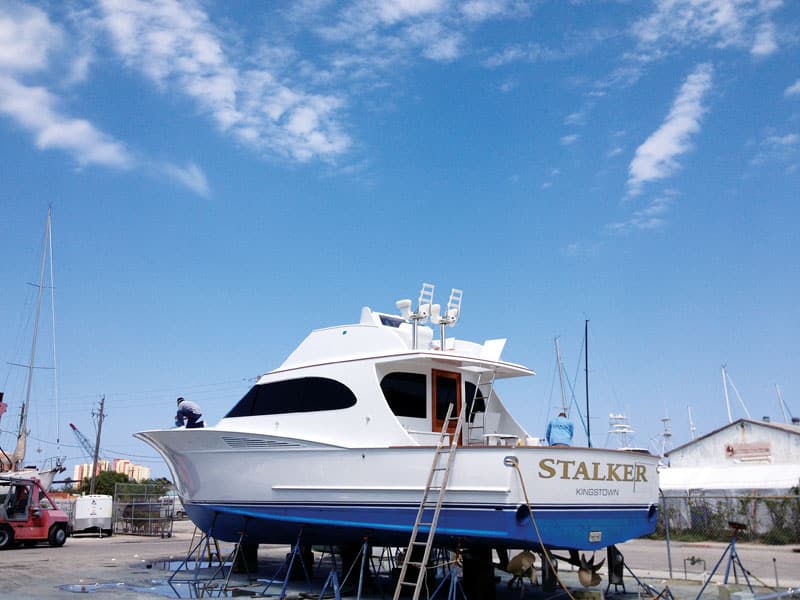
Getting such different figures from one painter to the next sounds crazy, but there are things you need to know before you jump into a $40,000 paint job. A number of good painters work independently of any particular boatyard. There are two places you can paint — indoors in a paint booth or outside. Outside is always less expensive, but it’s very hard to keep contaminates out of the work, and you might have to contend with the weather. I have done small jobs outside in good weather and have been sabotaged by bugs. There’s nothing worse than having rain or a bug land on a beautiful paint job before it’s dry.
I have had some very nice work done by independent painters. These guys can sometimes get you in faster, as they can find availability in outside and inside areas. There are two downsides to going independent, however. First: They are mobile, and if you need warranty work down the road, you may not be able to find them. Second: When a painter figures the job will take six weeks and for whatever reason it takes longer, there is rent owed. It could get into thousands of dollars owed to the yard, since the painter is only renting. In the end, the paint job gets completed, but the painter may not have the funds to get the boat splashed. This is a very bad position for all involved, and ultimately, the boat owner often ends up paying the rest of the yard bill. Know your painter well, or make sure your contract specifies you will hold back a large percentage of the final bill until the boat hits the water.
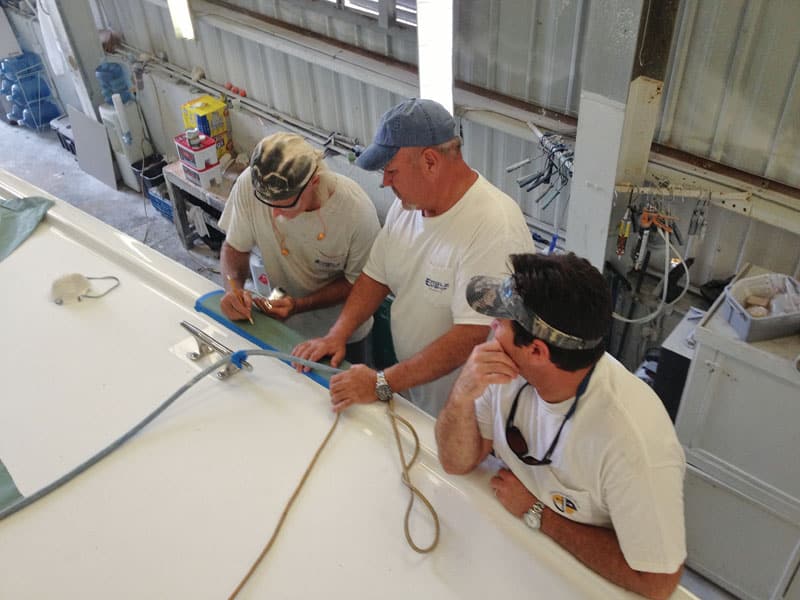
Find a Shed
It’s usually better to go with a yard that has its own paint shed or booth, although some paint in open-air buildings with one or more sides exposed. To control the dust and over spray, they will drape large sheets of plastic over the exposed sides. Once there is an agreed upon price with the yard, you don’t have to worry about a cost increase if the schedule is not met. Also, if you go into the yard with a list of items to be done along with the paint work, you can often work out a better deal.
Carlos at Eagle Eye is a little different. He is an independent painter that has been working out of Cracker Boy Boat Works boatyard with his wife, son and daughter for more than 25 years. He works out of two paint sheds with a down-draft vent system. This vent system is important to get a contaminate-free paint job. He also had the services to do my teak covering boards and cut in an anchor locker.
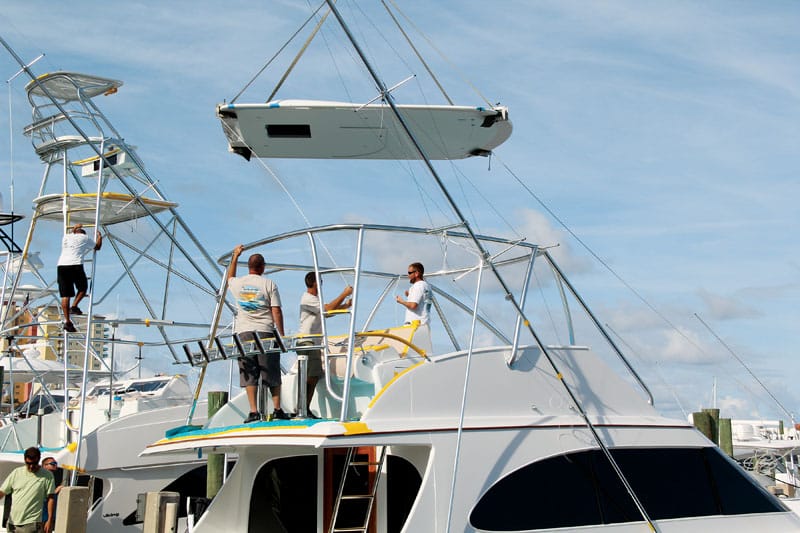
While talking to the painters, I made the rounds with different tower builders. We wanted to go with a half tower again, and I saw pricing from one end of the spectrum to the next. Prices vary so drastically because ordering a full tower or half tower is an a la carte business. When you ask for a tower, you need to be specific about what you want or don’t want on it.
For instance, a drop-down electronics box can change the cost by a couple thousand dollars, and you may not really need or desire one. After thoroughly reviewing our options, we decided to go with Palm Beach Towers. Their pricing was fair, and they had nice ideas about adding some curves to the piping that looked great in the drawings. Things were starting to fall into place. Carlos agreed to have all his work done in two months, and that would leave me two weeks to get the half tower built and two weeks to get the new electronics installed and do a few things in the engine room.
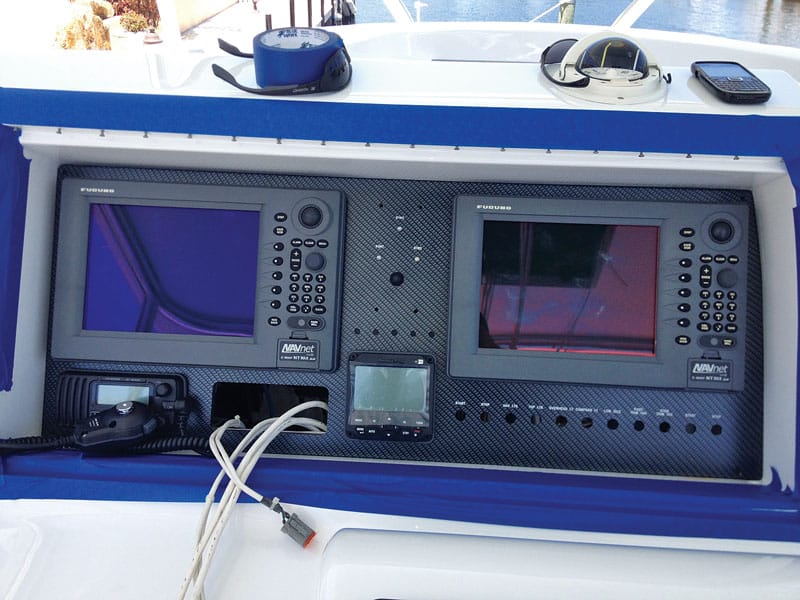
Buy It at the Show
With the boat delivered to Palm Beach and the plan in motion, I now had time to research new electronics and find a new fighting chair. Timing could not have been better, as the Miami International Boat Show was coming up. Finding a fighting chair at the show was going to be a no-brainer. I am not a big fan of teak chairs, so I went to the Pompenette booth and sat in the biggest, whitest chair they had and was not going to leave until we had a deal. We cut our deal on the chair with an added reinforced six-rod holder rocket launcher. Then I made my rounds to see some electronics.
I spoke to my electronics dealer and a number of captains and received lots of great feedback about Garmin’s new user-friendly gear, as well as the new 3-D Furuno touch screens. After a visit to their booths, I was very impressed with the gear from both companies. In the end, I decided to replace the old Furuno gear with the same NavNet 2 Furuno equipment I was used to. We had caught plenty of fish and traveled many miles with Furuno and never had a failure. And from a resale standpoint, you never know what the next owner or crew will prefer. If we made the added investment to put the latest and greatest electronics in, they might just get ripped out and replaced with something else, as technology changes fast.
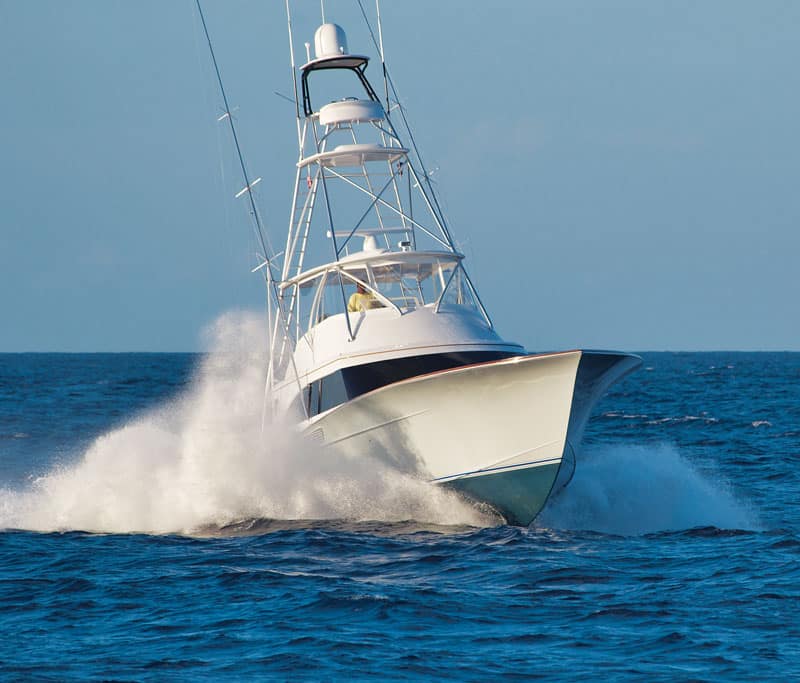
Satisfied Customer
In the end, all the work we did came out exactly the way we wanted. The paint job and covering boards turned out great, and the hardtop makes the boat look like new. The electronics installer put in the new electronics and also rewired the whole bridge. While that was going on, the engine room machinery was being rearranged for easier access. Now if we decided to keep the old Stalker and not build a new one, it would not bother me.
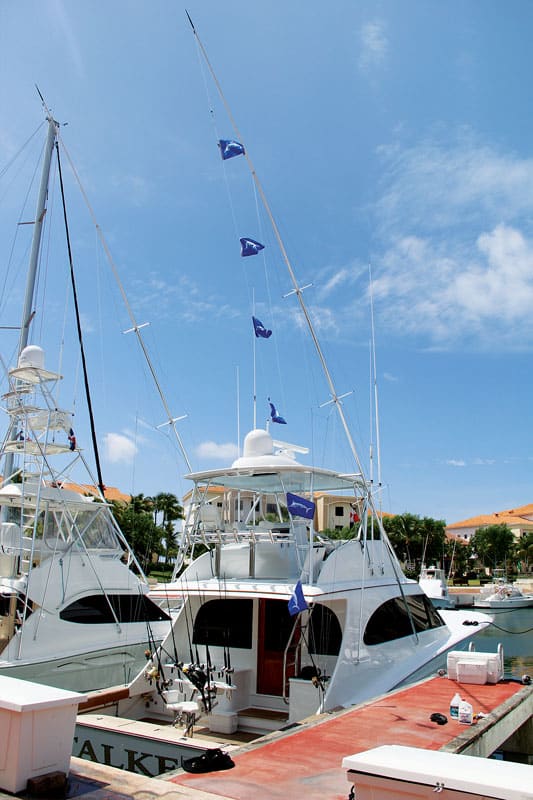
With any big job, there will always be unforeseen issues that pop up to slow the momentum and change the costs. No matter the age of your boat, make sure you add in at least 20 percent to your budget for these issues, and make sure you give everyone sufficient time to complete the work if a problem does arise. Remember, a large job done fast is never going to be cheap or done right.
